The group of tour participants swelled to over one hundred as we moved out from under the sharp edges of Michael Lee-Chin’s architectural statement at the Royal Ontario Museum (ROM) to the more comforting canopy of the white oak (Quercus alba). Philip told the story of the giant’s life and wondered, “What would she have seen in her lifetime?”
This tree would have been standing when the ROM opened its doors 100 years ago, and has lived through both World Wars, entire Space Programs, countless protests and parades and the construction of not just one, but two, subway lines. From horse-drawn carts, penny farthings and Zeppelins to Smart Cars, Bixis and supersonic jets, this tree has seen it all!
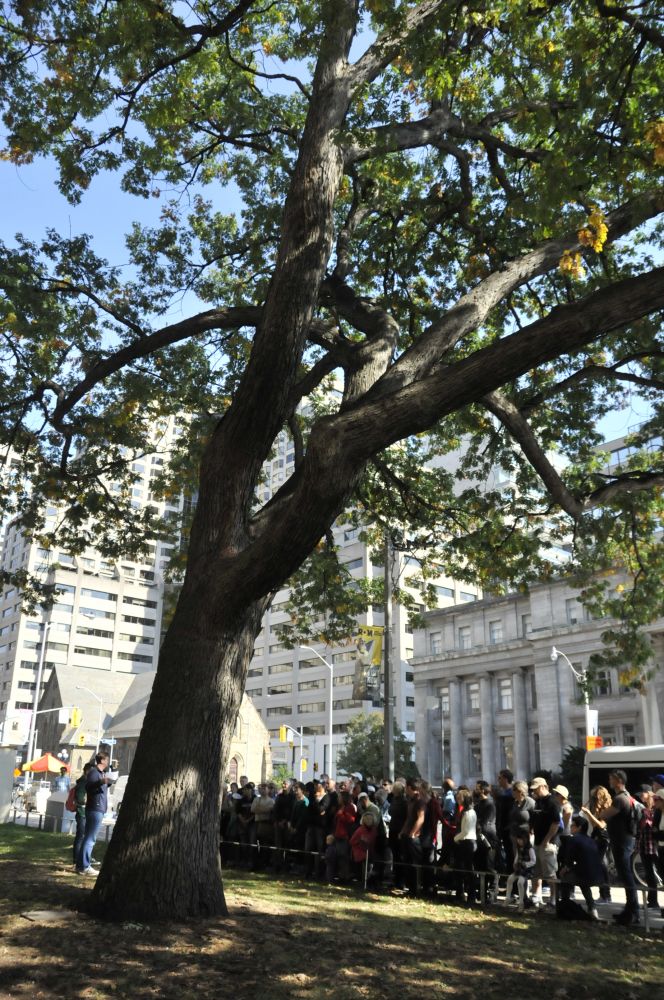
Set back a significantly greater distance from the street than its young nieces and nephews around the corner, the tree had been given enough space to thrive. Still, as the ROM’s collection grew, so did the numbers of tourists who came to visit the museum – and part of the purpose of building the new entrance to the north was to reduce the foot traffic that had been compacting the soil around this and other mature trees on the property.
A little girl asked about the roots. “Contrary to popular belief, they spread out like a fan – far and wide rather than deep – sometimes far beyond the drip line of their furthest leaf,” Philip replied. Later, as we passed a towering honey locust (Gleditsia triacanthos) -- a common urban species, but one we don’t always see at such great heights-- the group seemed mindful, walking widely around the base of the tree, taking care not to cramp its style. Education in action!
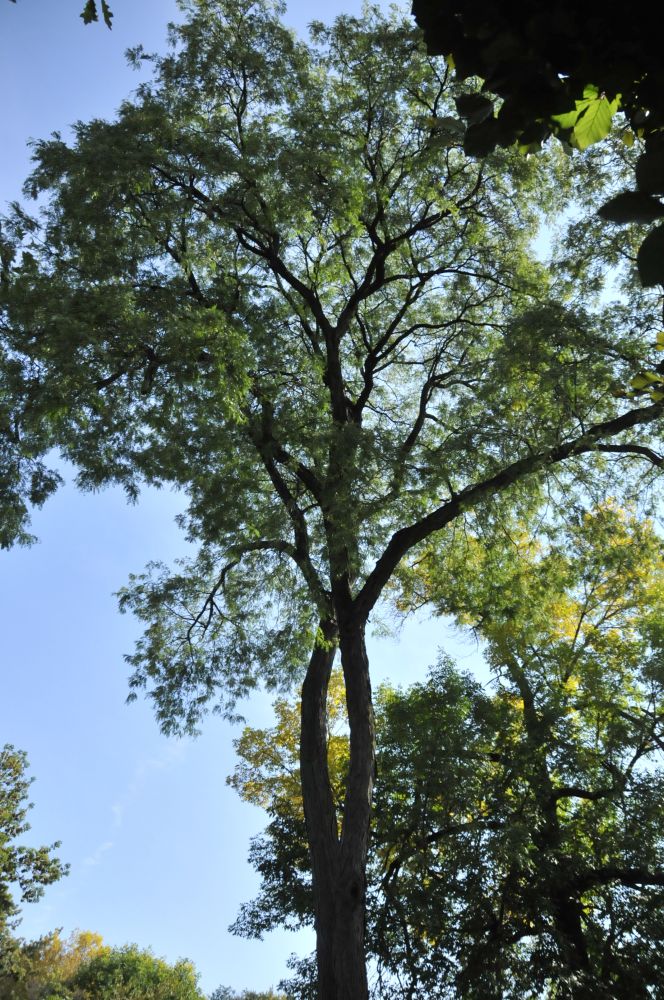
As we moved along Philosopher’s Walk, a landscape that was carved by the lost riverbed of Taddle Creek, I asked everyone to consider the ways we transform spaces, shaping them according to our needs and ideas of what a city should be. Philip discussed this in terms of biodiversity and the importance of ensuring we have a variety of trees – both young and old, with a good mix of species, mimicking the way a forest would naturally develop – as we craft our urban spaces.
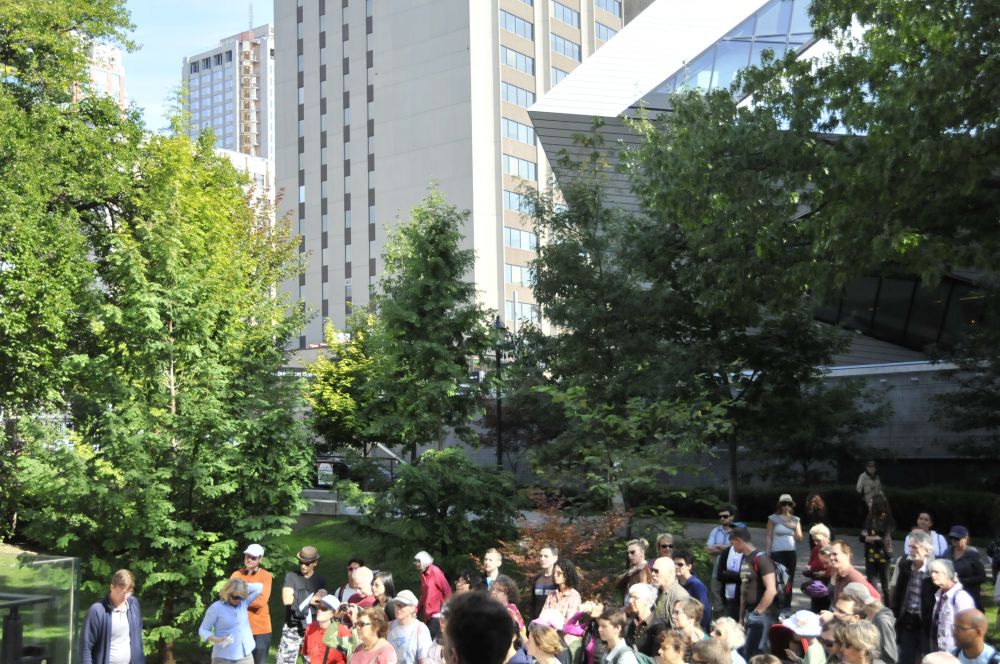
This was my second tour with Philip, and this time I found myself paying a lot of attention to the way the trees lined up against the skyline of downtown Toronto. As we walked along, Philip gave us notes on how to identify common urban species. “In Bavaria, before refrigeration was an option, they used ice from the rivers to keep their beer cool and kept it under the shade of trees. It’s not a real Beer Garden without a horse chestnut tree,” he said. And I thought to myself: it’s not a real city without a forest.
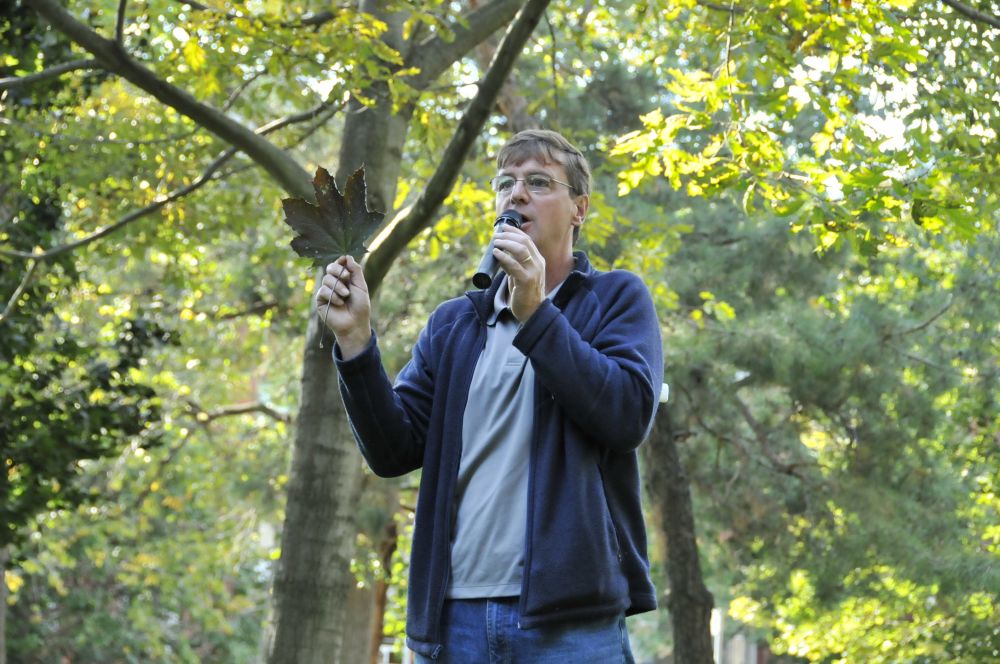
By the time we reached the top of Queen’s Park, the temperature had crawled up and it began to feel like a summer day. We passed by a century old tree and I pointed out a small black sign identifying it as a red oak. I explained that during the construction of the ROM’s Crystal - where we began the tour - several mature trees had to be removed, but six were left standing.
Those responsible for the construction went beyond observing the minimum requirements of a tree protection zone, preserving the delicate roots of these trees and making sure they survived the expansion. As a way of paying tribute to those that had to be taken down, the Trees For Toronto project was created, and the trees that remained were recognized with labels that draw attention to their history, both natural and cultural.
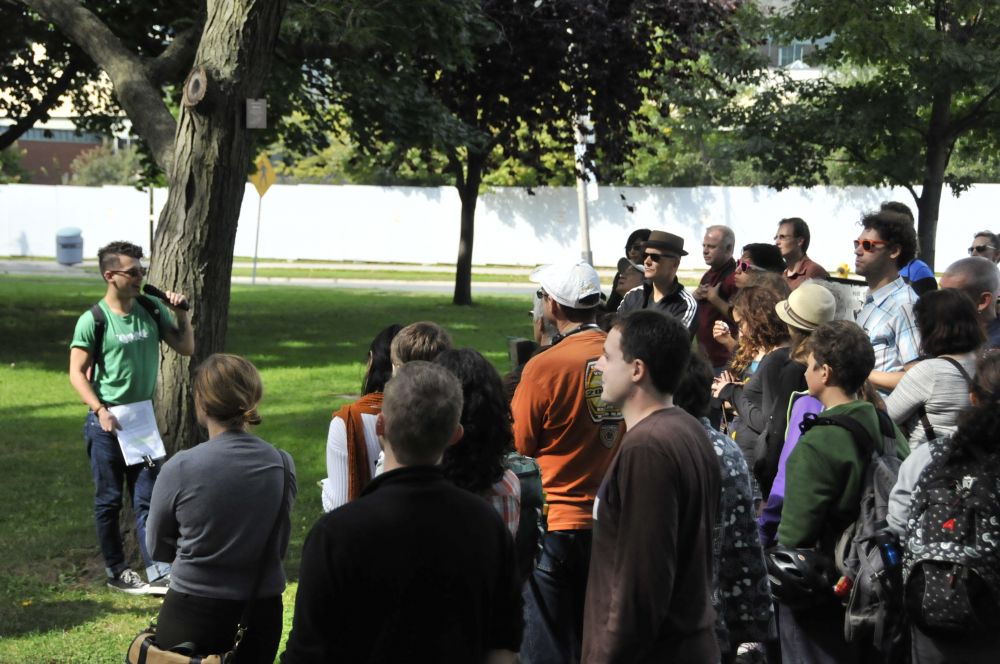
Philip and I spoke with Charlotte Anketell, an aspiring journalist in Humber College’s broadcasting program, about the Tree Tour for the College’s radio program. You can listen to the interview here and check out her photos from the tour on the LEAF Facebook page. She captured nicely what we were hoping to achieve with this event – and from all of the captivated faces I saw while Philip described his passion for old trees, I think we did a pretty good job of nailing it.
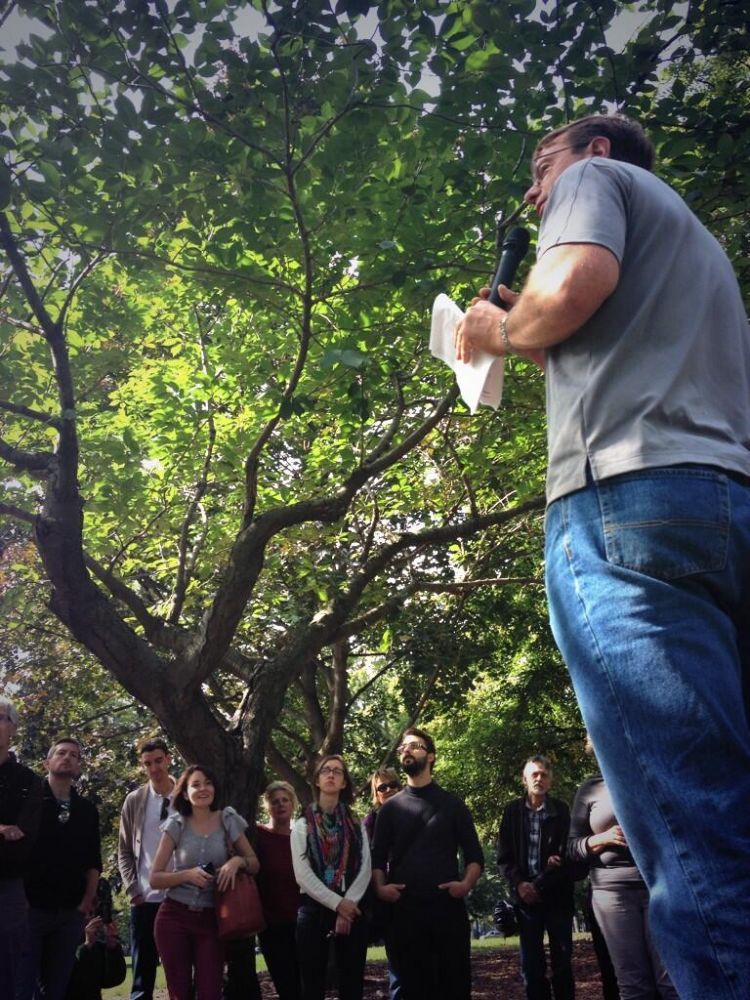
At the end of the tour, Philip encouraged us all to look for the heritage trees around our homes – prominent community landmarks, ones tied to historic places and people, or others of notable size, shape or beauty. Is there one you would nominate in your neighbourhood?
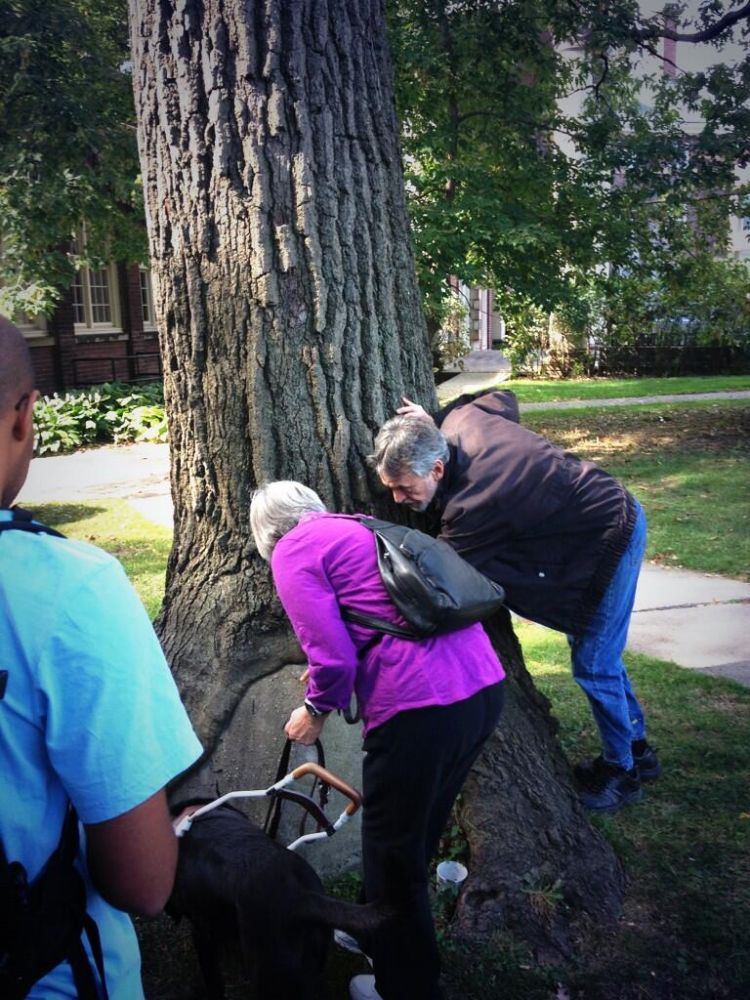
Check out our next Tree Tour in Leslieville, looking at a heritage tree that had a huge role in shaping the Canadian identity: the Maple Leaf Forever Tree. Our Tree Tours are supported by Ontario Power Generation's Biodiversity Program, York Region and the Ontario Trillium Foundation.
